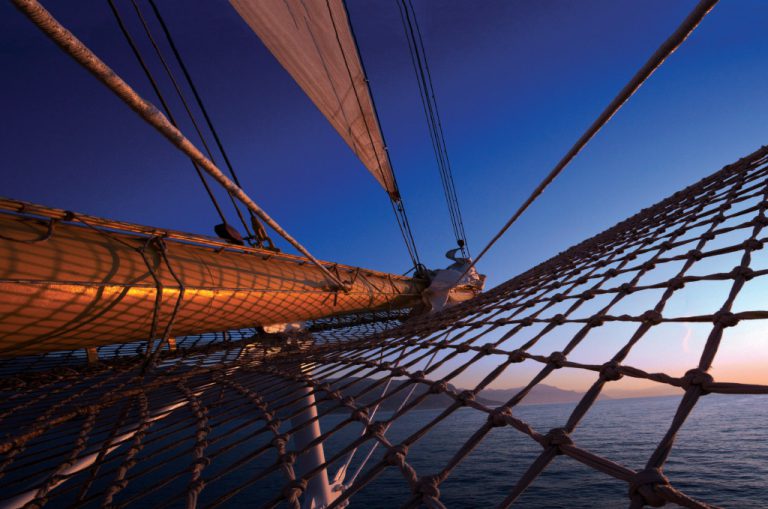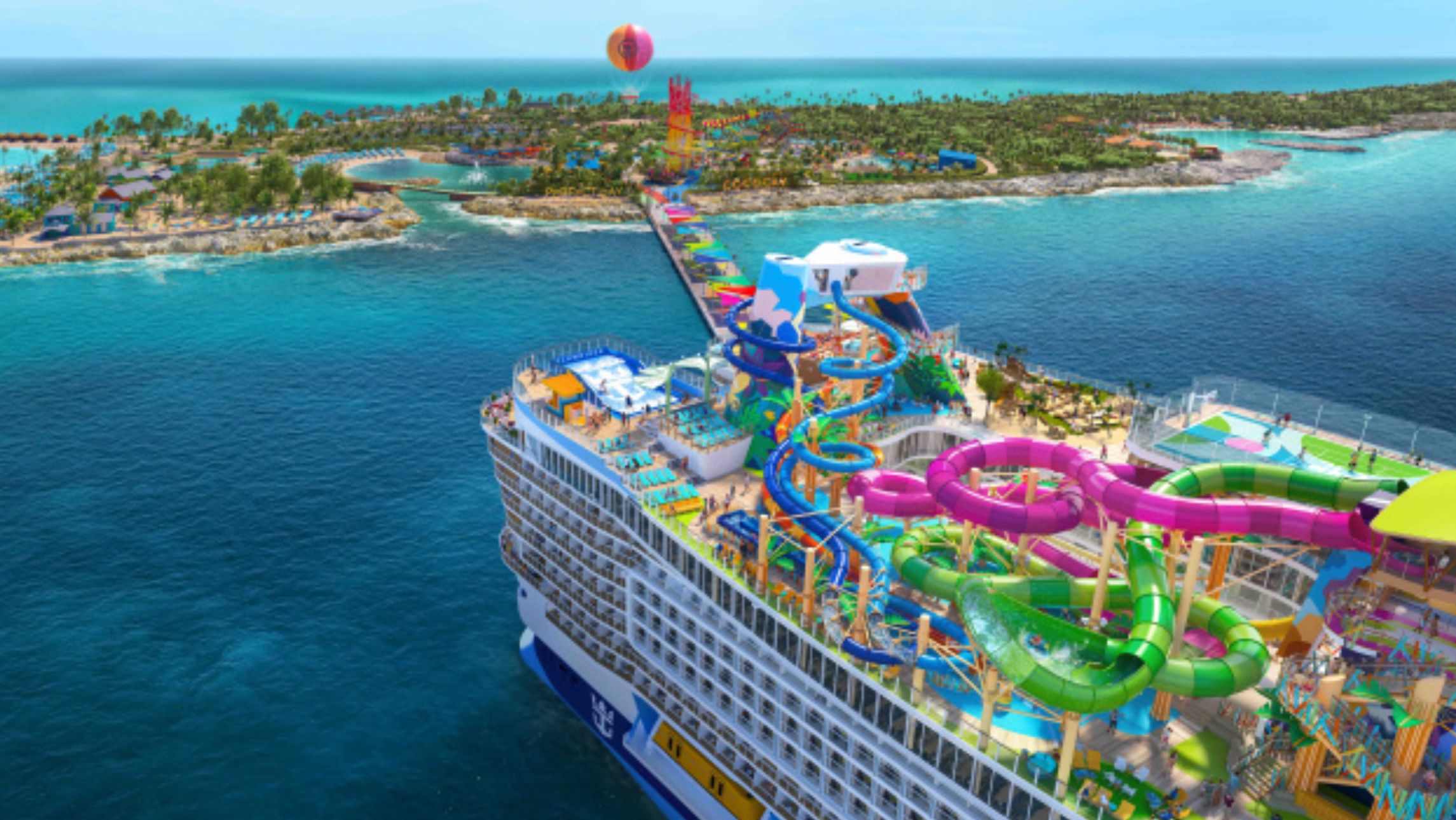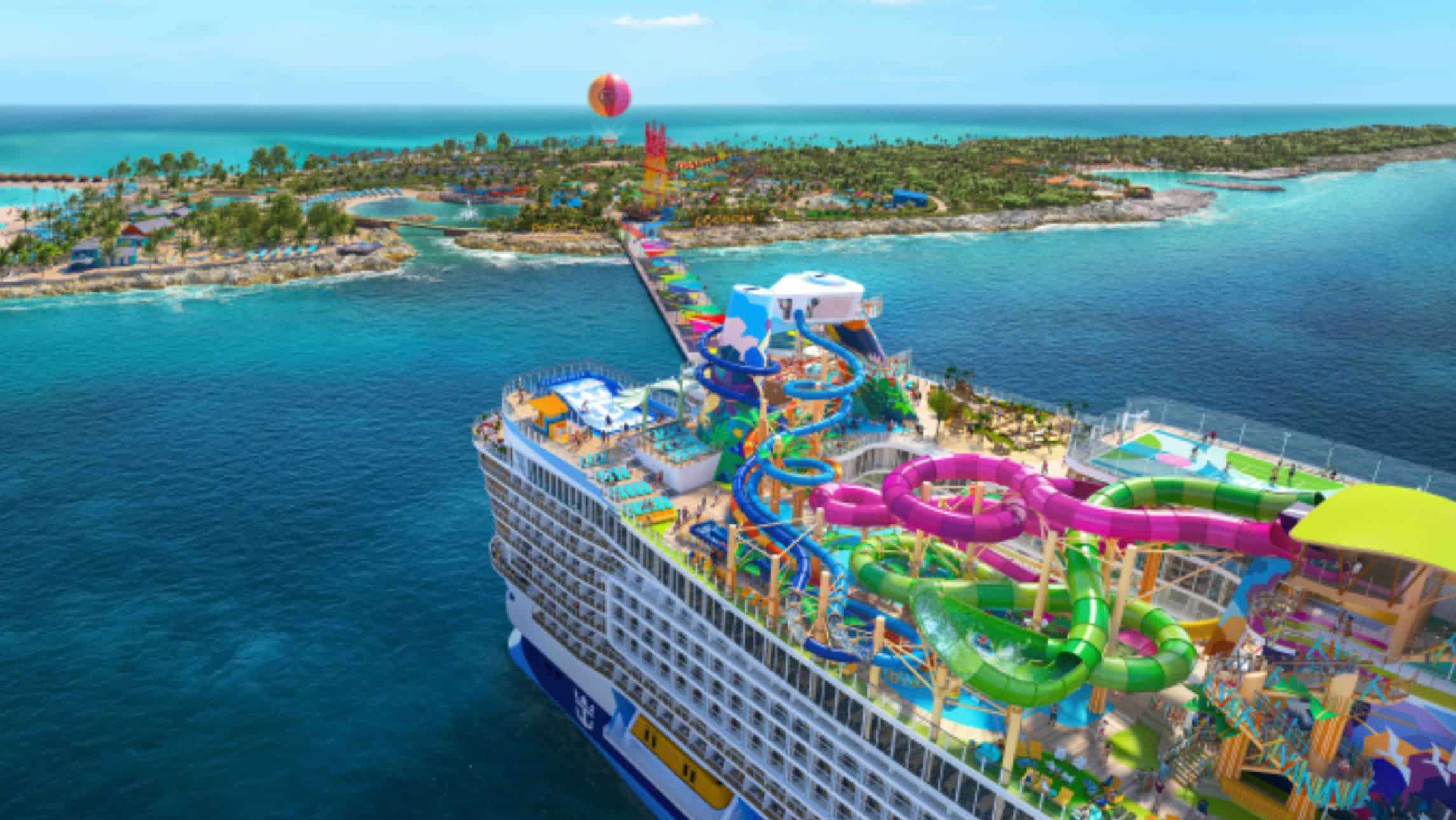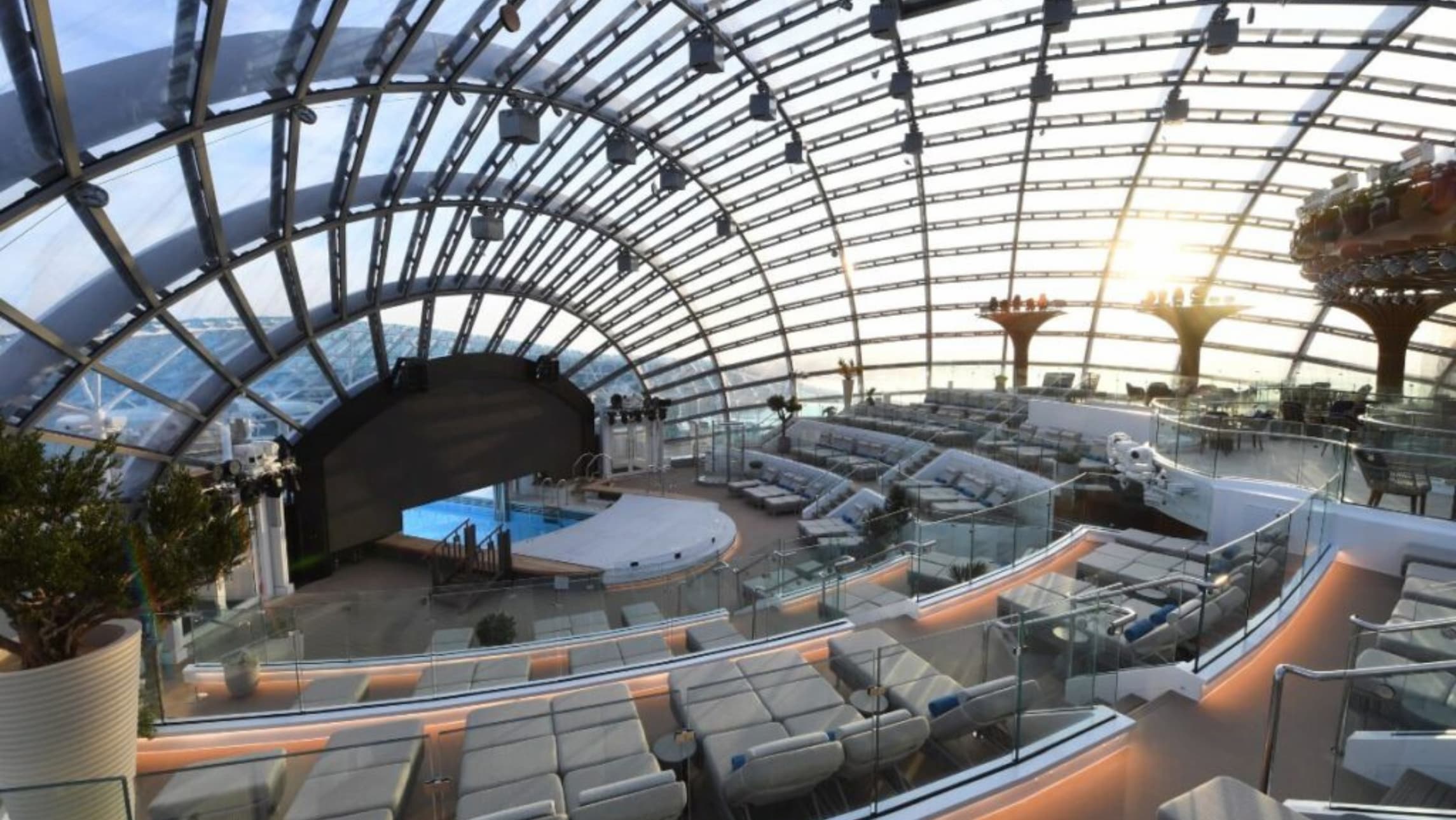They are the stuff of dreams. And Roderick Eime, who watched windjammers on TV as a youngster, relives the romance of a bygone age on Star Clipper, a thoroughly modern replica.
Standing on the slowly rolling open top deck of the four-masted Star Clipper, I reach over and grab a polished mahogany railing to steady myself. The brisk Mediterranean breeze sets the loose sailcloth flapping. The only thing missing is the BBC orchestra striking up the rousing theme from the 1970s TV series The Onedin Line.
The popular drama drew huge audiences and was dubbed into several languages including German, Swedish and Romanian. For this impressionable and imaginative youngster watching on the newest hi-tech colour television, these magnificent sailing ships sowed a seed that took decades to germinate – and here I am.
Despite its beautifully classic lines and timeless nautical design, Star Clipper was launched in 1992, a year after her almost identical sister ship, Star Flyer, and more than a decade after the last Onedin Line episode went to air.
To look at her with all 3,365 square metres of sail unfurled, you could easily think you were gazing at one of the 19th century’s magnificent tall ships. It was these vessels that enraptured the young Swede Mikael Krafft, who went on to found the Star Clippers cruise line with the launch of these two ships.
Life aboard Star Clipper is not all deck chairs and cocktails. Time is set aside for guests to climb the mast for photos and a taste of life working on a tall ship. Several of us lounge lazily on the bowsprit netting while others pose imperiously at the helm, but in our week at sea in the Aegean, there is barely enough wind to blow out a birthday candle and much of our time is under power.
“You should have been aboard last trip,” one guest tells me while imitating waves and wind gusts with sweeping hand gestures. “We had 40-knot winds. It was great.”
If you go aboard Star Clipper for the full Onedin Line experience, you may be disappointed that the full rig is not unfurled, but you won’t be becalmed. She’ll make 10 knots under power.
The clipper’s 85 cabins are arranged across four decks in six categories and are similar in size and amenities, with yacht-like decor and comfort.
The biggest distinguishing feature between categories is their location on the ship. The higher the cabin category, the higher or more central they might be located on board. The eight Category 1 cabins open onto the deck.
All cabins have a TV, DVD player, phone, thermostat control, private safe, hair dryer, nightly turndown service and 110 volt/American power outlets.
Dining was a very pleasant surprise. I’d heard mixed reports, but I found the variety and the quality hard to fault. A typical day’s fare begins at 0630 hours with an early riser breakfast, followed by buffet from 0800 to 1000. Lunch is at 1200 either on deck or in the dining room. Cocktail hour at 1700 leads into dinner at 1930. Midnight snacks are served until 0100. A random menu from chef Rodolfo Soledad starts with thin-sliced dried beef and barley salad followed by soup and sorbet.
A choice of mains could include grilled salmon, duck breast or stuffed bell peppers for vegetarians. There is always an alternative such as pasta or sirloin if nothing on the menu appeals.
The dining room itself can be a bit tight, especially at its busiest, consequently it’s common for guests and serving staff to bang chairs as they squeeze between tables.
Despite there being a lot of open deck space and plenty of fresh air, it can be tricky to find somewhere to retreat for a bit of privacy besides your cabin. One place is the library, opposite the Tropical Bar, but even then you can be interrupted as the senior staff like to conduct meetings there. That’s life on a small ship.
In between shore excursions, we are treated to quite exhaustive lectures on the history of tall ships and the ports of our sailing region, the Southern Cyclades of Greece and the western coast of Turkey.
In the 19th century, clippers were expressly designed as fast sailing ships to bring cargoes of tea and perishables back from the Far East and Orient in double-quick time. The old East Indiamen would dawdle along at five knots, while the new breed of clippers could nudge 20 knots under ideal conditions.
Like racehorses, their lives were short, fast and furious. Now, strictly speaking, the Star Clippers are “windjammers” by dint of their steel hulls whereas clippers, designed in the late 18th century, were timber. Consequently, windjammers survived much longer than their timber forebears and were still carrying commercial cargo up until the early postwar years. Several century-old vessels survive to this day, including a handful still in operation.
Star Clippers has a fleet of three sailing ships and recently announced the construction of a fourth, the world’s largest sailing ship, for delivery in late 2017. The as-yet unnamed ship will carry almost twice the amount of sail and double the number of guests as Star Clipper.
Not only will the added capacity allow the line to greatly increase its inventory, it will allow the fleet to spread out around the world and explore new territories.
Currently, Star Clippers vessels can be found throughout the Mediterranean and Caribbean, but from late 2016, itineraries will include Asia as Star Clipper repositions to homeport from Phuket, Thailand for five months.
Certainly this cruise is not for everyone, especially those used to the vast expanses of today’s megaships and all their trappings. But I can’t help thinking the exquisite coastlines and idyllic Greek island ports such as Hydra and Patmos are more befitting a gorgeous vessel such as Star Clipper than having her thrashed across a boiling ocean within an inch of her life.
The Verdict
Highs: Intimate and cosy atmosphere with unmistakable feel of life under sail; great food (really); flexible and enriching itineraries.
Lows: Lack of privacy on full ship; squeezy dining room; may be not as much sailing as one might expect.
Best suited to: More seasoned travellers looking to add variety and new experiences to their worldly portfolio.








